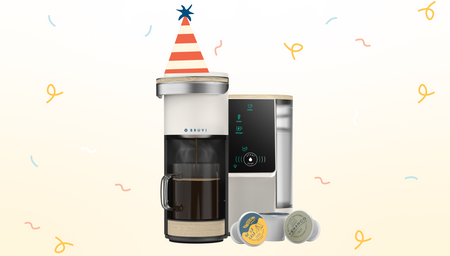Did You Know This Impacts Coffee Taste Profiles?
There are so many factors that influence coffee and what you taste in your cup. One of those important but not as commonly discussed factors that can greatly impact a coffee’s quality, taste and value is growing elevation. Along with general geographic traits like climate and soil, elevation is a critical component to the resulting taste profile. Over the years, the noted importance of elevation has grown as more and more roasters are placing those details front and center on their packaging right alongside varietal, roast level and tasting notes. Let’s look at the highs and lows of coffee elevations and what these numbers really mean for your coffee.
Higher Altitude Coffees Are the Most Desirable
It’s generally known that coffees from higher elevations (3,000 ft+) produce more complex and rich coffee flavors. The reason for this is that the tougher climates subsequently produce harder coffee beans. The greater density of these beans is largely due to a higher concentration of sugars, which is the driving force behind the flavor complexity of these coffees when roasted. At the end of the day, high-elevation coffees yield a much superior body and aroma than low-elevation coffees and account for the vast majority of specialty coffee worldwide.
Lower Elevation Coffees Can be Bland and Underwhelming
At low elevations, coffee has trouble developing deep flavor complexity. This is largely due to the fact that at these lower elevations, temperatures are higher, pressure is lower, and conditions are usually less extreme. In these areas the coffee plants grow quicker, retaining more water and less sugar. Additionally, since conditions are rather mild, these plants can also be more prone to disease as they have not built up the same level of resistance as some of their higher altitude cohorts.
Low Elevation Rule Breakers
Aside from elevation, distance from the equator also plays a role. One huge exception to the rule that “higher is better” is coffee grown in Hawaii. Prized Kona coffee is grown at only 2,000 ft, but since it is so far north of the equator and production is slowed by shade, it still produces excellent coffee that commands some of the highest prices in the world.
What to Expect at Different Elevations?

If we look at various elevations, we see a general pattern emerge when it comes to coffee taste. While there are certainly outliers and exceptions, here is what you should broadly expect from various altitudes, low to high.
- <2,500 ft: subtle, bland, earthy
- 3,000 ft: smooth and sweet
- 4,000 ft: citrus, vanilla, cocoa or nutty
- 5,000 ft: complex, acidic, floral, fruity or wine
Bruvi® Uses Only High Elevation Coffees
As a coffee-first company, we don’t select anything but the best coffees from around the globe. When you brew Mulholland Roasters® and Wonderland Coffee™ B-Pods® on your Bruvi® brewer, know you are drinking some of the most delicious high elevation coffees the world has to offer. No cheap low-altitude coffee here my friend!





